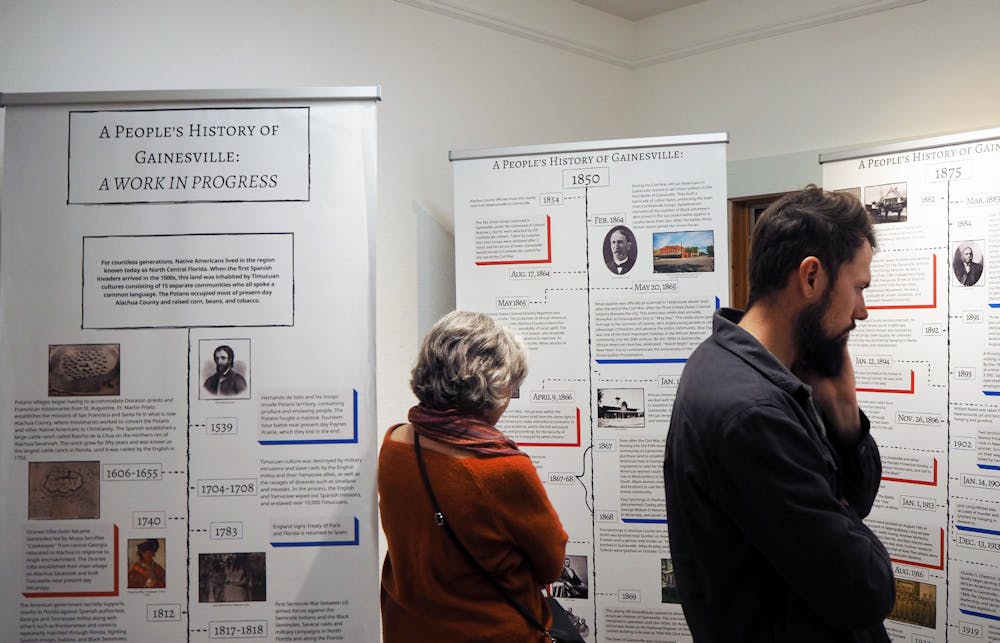People filtered in and out of the A. Quinn Jones Museum and Cultural Center, crowding around a handful of text displays making up its new exhibit.
While modest in physical scale, the museum aims to offer a comprehensive picture of minority culture in Alachua County, from its people to the buildings they lived in.
The “African Americans In Gainesville” exhibit, which premiered Jan. 10, examines prominent civil figures in Gainesville throughout history and features historical homes from the city’s Pleasant Street and Fifth Avenue areas — historically Black neighborhoods in East Gainesville.
Belay Alem, a 34-year-old Gainesville attendee and UF anthropology Ph.D. candidate, said the joint focus of people and the land at the time offer a greater understanding of the area’s culture.
By focusing on the local community — especially its former look — the presentation allows researchers and locals to better connect, Alem said.
“Every story is tied to space — people’s experiences of memories,” Alem said.
Multiple local organizations collaborated with the museum to create the exhibit.
A written timeline introduces attendees to the exhibit, covering prominent people and organizations within the local area that affected civil and social progress throughout history — dating back as early as colonial times.
The timeline was contributed by the Samuel Proctor Oral History Program, a UF-based research center that focuses on preserving historical accounts through interview recordings.
Marcus Chatfield, 53-year-old coordinator of the timeline and UF history Ph.D. candidate, said about 15 UF student members made the timeline in 2019 with the goal of local outreach. The new exhibit marks its first appearance at the museum.
“The timeline was meant to be something useful for the Gainesville community and something that would be beneficial beyond the UF campus,” Chatfield said.
NKwanda Jah, the executive director of the Cultural Arts Coalition who coordinates the Fifth Avenue Arts Festival, said she requested the timeline’s creation. The exhibit was necessary to preserve information when physical artifacts — whether buildings or people — were gone, Jah said.“I want in 100 years for there to be information about this community that is accessible,” Jah said.
In addition to the timeline is a series of historic photos of the property on Fifth Avenue and Pleasant Street, which Gainesville Neighborhood Voices cites as the city’s oldest intact Black neighborhoods. These were contributed by the Pleasant Street Historic Society, a non-profit centered around preserving the district.
Dale Harris, PSHS president, said the imagery was valuable as many of the properties have since been destroyed or are currently uninhabitable.
“Pretty much all of those houses are gone,” Harris said.
New exhibits like these are created regularly as a preview to Black History Month in February, said Carol Richardson, museum coordinator.
The exhibit and other features help highlight the important role local communities play in civil rights movements, Richardson said.“These are people that have affected Gainesville as it comes to law as educators or teachers, janitors, babysitters, midwives,” Richardson said.
The exhibit will be available for the rest of January. Afterward, it will be periodically swapped in and out of rotation.
Contact Aidan Bush at abush@alligator.org. Follow him on Twitter @aidandisto.

Aidan Bush is a fourth-year journalism major and the Summer 2024 Editor-in-Chief of The Alligator. In his free time, he likes to listen to music and go kayaking.






